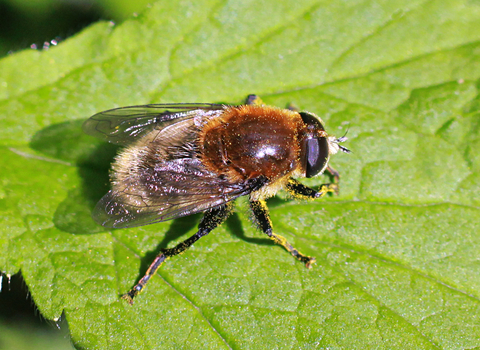
Narcissus Bulb Fly ©Penny Frith
Narcissus bulb fly
With ginger hairs, dark banding and a cream tail, the Narcissus bulb fly looks like a bumble bee, but is harmless to us. This mimicry helps to protect it from predators while it searches for nectar in gardens.
